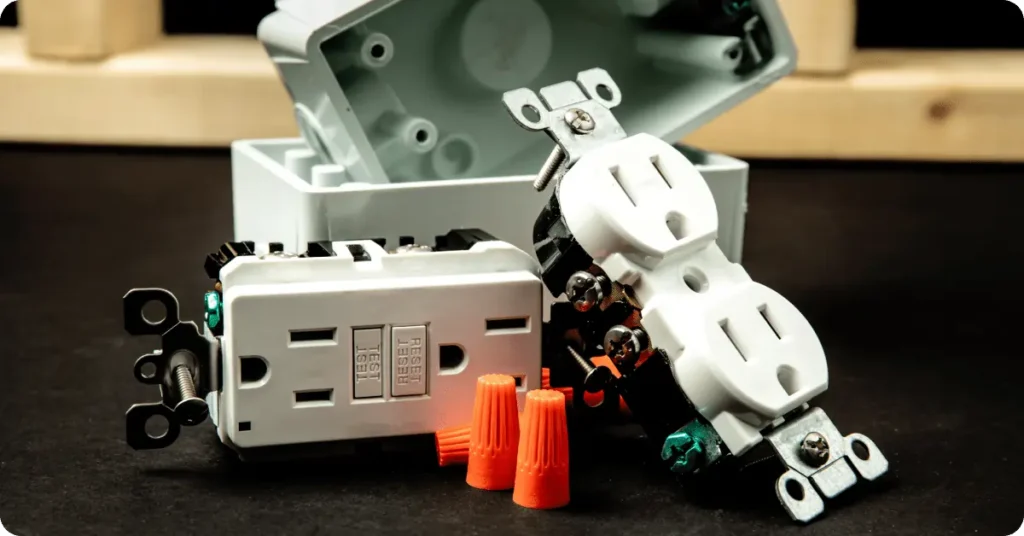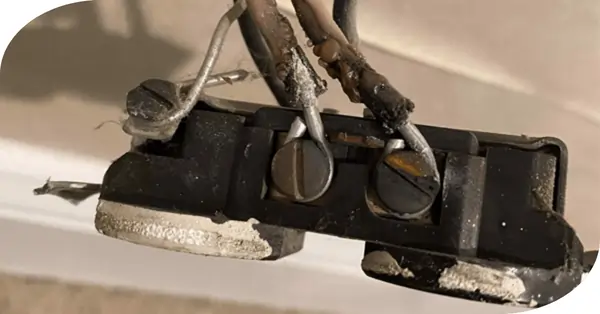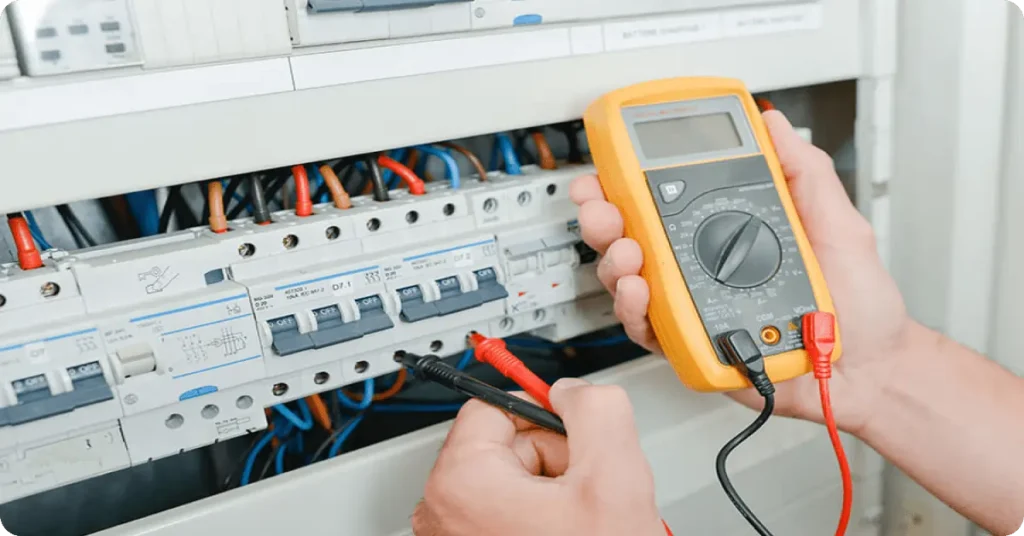GFCI Protection, you’ve heard the term but what exactly is it? Why do we need it, and how does it keep us safe? Read on and you’ll know everything you need to know!

What is GFCI Protection?
GFCI protection refers to an electrical device called a Ground Fault Circuit Interrupter. A GFCI device will open up (turn off) halting electrical current very quickly any time it senses a ground fault. Very simply, it will trip any time electricity is flowing in an unintended path. A GFCI Protective device opens (or trips) when there is an imbalance between the ungrounded (hot) and grounded (neutral) conductors in a circuit. The whole point is to keep us as humans safe from electrical shocks and electrocution. When this happens, the scenario becomes ripe for electric shock. A GFCI is more effective at opening a circuit in many shock/electrocution scenarios than a circuit breaker as I’ll soon explain. Remember, a regular circuit breaker is for overcurrent protection, not ground fault protection.
What GFCI Protection does
A ground fault by definition occurs when the ungrounded (“hot”) conductor somehow touches the grounding (“ground”) conductor or any metallic part bonded to the grounding system according to the NEC. This can be directly ungrounded conductor to grounding conductor OR through a resistive load, back on the grounded (neutral) conductor and to the grounding (ground) conductor. It is a type of short circuit but as you’ll see, a GFCI device can protect much more.
In the case of a ground fault, the circuit breaker will trip. Great, right? Not exactly. A typical breaker is what we call an overload device. It protects the circuit in the event of, you guessed it, an overload. For example a big space heater or a malfunctioning motor. They also normally have a short circuit rating in which they can open a circuit in the case of a short. This helps much of the time, but not all of the time. There are plenty of dangerous, life threatening scenarios that can take place without an overload or a short that will trip a typical breaker but will trip a GFCI device. Please see this fantastic resource offered by Mike Holt here.
This is why GFCI protection saves so many lives. As we mentioned earlier, the GFCI device detects an imbalanced load. This is typically around 5 thousands of an ampere, and in as quickly as 1/30th of a second. Once detected, it immediately trips (opens the circuit) to stop the current from flowing. Hence the name of ground fault circuit interrupters. The electrical circuit is interrupted in the event of a ground fault. A ground fault is detected by the device via a tiny current transformer that monitors power leaving, and power coming back.
Since the only way to be safe from a ground fault situation is to open the circuit, period. A short or an overload need not be present to have a dangerous situation.
What do GFCI Protection Devices Look Like?
Now that we know what a GFCI protection device does, how can we identify them? How about some pictures to make life easier? Here are the two most common types of GFCI’s:
GFCI Receptacle:
A GFCI receptacle (or commonly referred to as a GFCI electrical outlet) is by far the most common form of GFCI protection you will see around your home. They have a test and reset button. When a ground fault is detected, the reset button will move outward and need to be pushed back in. They provide GFCI protection for the device plugged in to it as well as any devices or receptacles wired downstream on the load side of the receptacle. It is recommended to test GFCI receptacles at least once a month. Newer devices have an indicator light and are supposed to self test but it can’t hurt to do it manually.
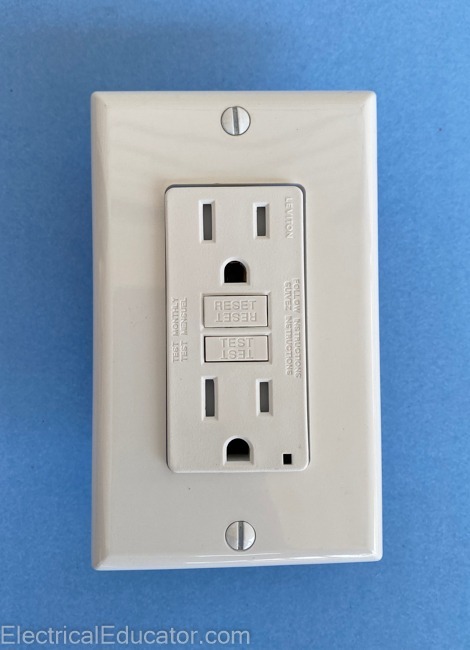
GFCI Circuit Breaker
A GFCI Circuit breaker offers GFCI protection along with overcurrent and short circuit protection. The one you see pictured protecting a pool filter pump. Note the pool lights are not on a GFCI breaker, they are on the load side of a GFCI receptacle. This example is a 2-pole circuit breaker but GFCI breakers come in the single pole configuration for single phase branch circuits as well. A GFCI circuit breaker is intended to protect the entire circuit.
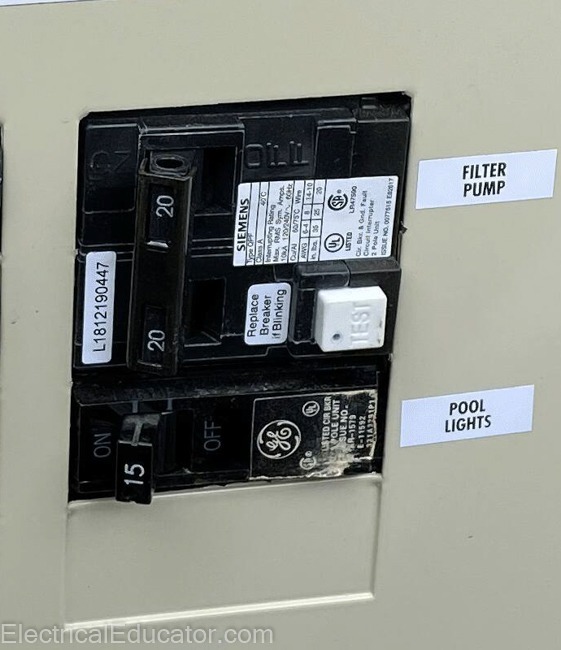
Where are GFCI devices located?
To cover it quickly, GFCI protection is required in any location that might even remotely come in contact with water. Kitchens, crawl spaces, unfinished basements, accessory buildings, outdoor outlets (all of them today), outdoor receptacles, pool equipment, and other wet locations. Please see my article GFCI Locations for a very in depth answer to this question with many references and explanations right out of the National Electrical Code.
Conclusion
GFCI Protection is one of the best ways to protect us as humans from the dangers of electrical faults. Fortunately they are required in more new construction applications today than ever before. Hopefully you have a better understanding of how GFCI protection works and why it is so important today. For a better understanding and explanation of where GFCI protection is required, see GFCI Locations. If you’re in need of a professional, licensed, trusted, qualified electrician to either install or repair any sort of GFCI device, consult our National Electrical Registry. As always thank you for reading.
A device that is designed to open a circuit (turn off power) in the event of a ground fault. Its purpose is to protect us humans against electric shock, turning off in as little as 1/30th of a second in the event of a fault.
No, a surge protector protects against surges. A GFCI is to keep humans and equipment safe from ground faults.
No, typically not. If the lighting manufacturer requires it then yes it does. Stop using tiktok and asking these questions.
The GFCI monitors the current leaving the source and returning to the source. If there is an imbalance of 4-6mA, the device trips, opening the circuit (turning off power).

